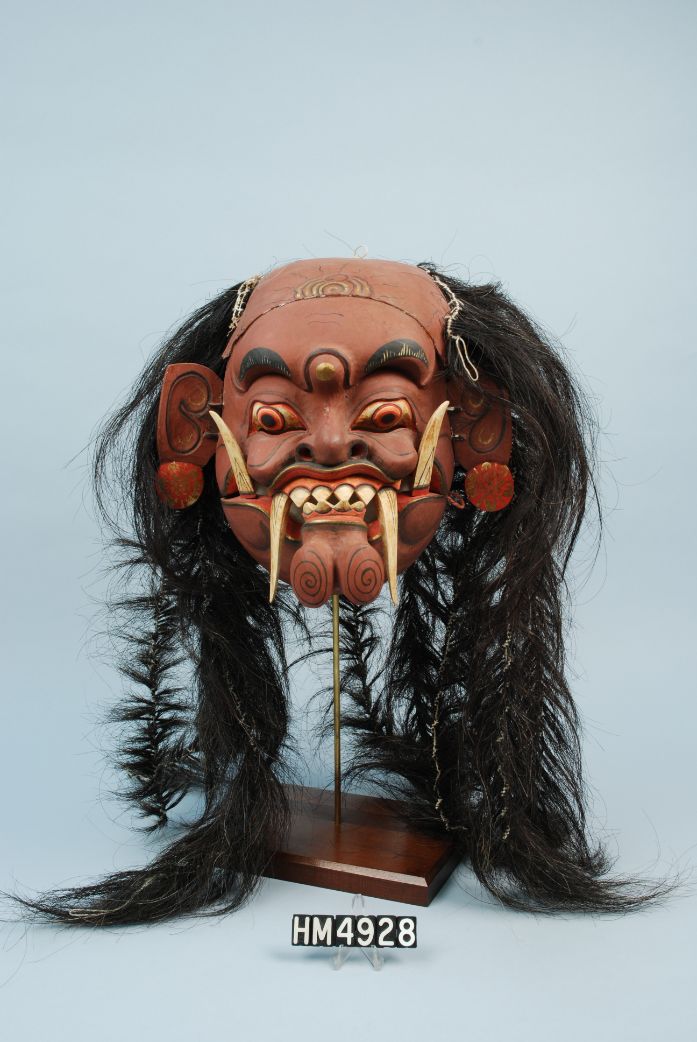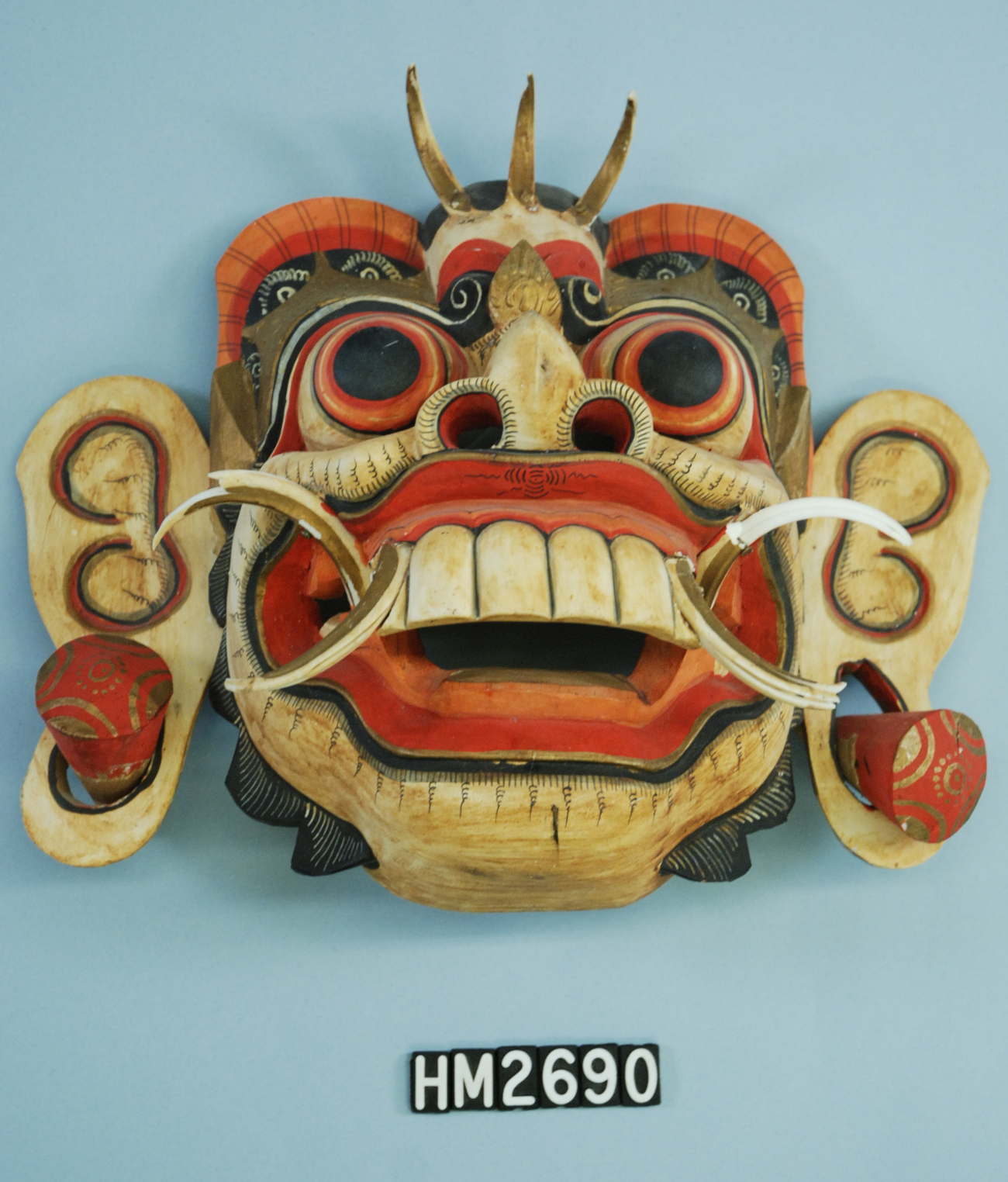Hudson Museum Scavenger Hunt: Balinese Rangda Mask

Where did it come from?
This mask originally came from Bali in Indonesia. It was handmade. All of the wood would have come from one tree, taken without cutting the tree down, and then once the mask was completed, it would’ve been presented to the tree from which the wood was taken.
What was it used for?
Rangda mask were worn during a performance called the Barong Dance. Balinese masks have 4 main uses: religious practice, protection, performance, and decoration.
Masks can be seen decorating buildings, incorporated into temples, and nearly every festival or cultural event will have a performance done by dancers wearing masks.
The Myth
Rangda was known as the demon queen, and after her husband was killed by Erlangga, she summoned an army of demons and spirits to kill him. Overwhelmed by Rangda’s forces in battle, the Erlangga calls Barong for help to bring soldiers and continue to battle. Enraged, Rangda casts a curse to drive Erlangga’s troops to kill themselves with their own poisoned knives, but Barong counters with a spell to make the troops invulnerable to their sharp knives. Outmatched, Rangda fled and left Barong, Erlangga, and the soldiers the winners.
Every temple in Bali has a Barong and Rangda mask inside and people will come to pray that their spirits remain contained in the masks, and they don’t return to continue their war.

To find the next code:
Face the mask, turn to the left, and look through the nearby exhibits for long, thin pieces of metal. You can scan the QR code when you find them, or click here to continue.
